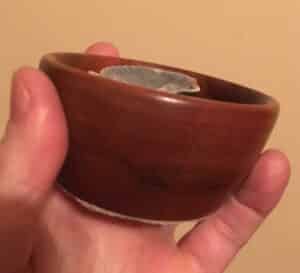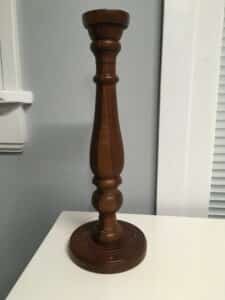I didn’t spend a lot of time with Earl Russell, but he left me with a profound influence that I didn’t appreciate at the time. I could have spent a lot more time with him, and learned a lot more if I hadn’t been so lazy.
Mr. Russell was an older gentleman who was a member of our church. He didn’t stand out to me when I was a kid. I was vaguely aware of most of that generation as just an amorphous mass of “old people” in the congregation where I suffered through Sunday service. I didn’t get as much out of Sunday service then as I do now.
He had a grandson named Mike who lived in Arizona, and he didn’t get to see him all that often. Mr. Russell was friends with my grandmother and when Mike was in town and getting bored, they put us together to play.
This was when I was around 11 or 12. Mike loved to play the piano and show off, and I was resisting the piano as much as possible at that time (though I usually got my 30 minutes of practice each day; another example of how I could have benefitted so much had I not been so lazy). He could play “Alley Cat” from memory and put on a show, which inspired me to learn it and play it in recital the next year. My teacher, Arda McMullan, didn’t think much of the piece, but as I was showing some enthusiasm for something at last, she let me do it.
Mike had also learned some woodworking from his grandpa, and invited me over to the wood-shop. It was in a small shed out back of the house. A little bit dark, a lot “old looking”. He set up the lathe and began turning a piece of scrap wood. If you have never seen a wood-turner at work, you should. It is wonderful. The spinning wood changes shape as if by magic as you move the chisel. I was fascinated.
After Mike went home, Mr. Russell offered to teach me how to make things on the lathe. WOW! I could hardly wait to make magic.
The first lesson I learned was that it’s not as easy as it looks. It’s pretty easy to hold the chisel wrong and knock big chunks out of the wood. He was patient with me, guiding my hand until I became less awkward.
He and his wife fed me lunch, which was fried crappie fillets. I had never had crappie, but I loved fried catfish, and this was better, especially the part about no bones.
Then we continued working. He helped me make a little bowl out of walnut, which I still have – just right for loose change or safety pins and stuff. We did that one in a day.

The next project was a small plate made of cherry, and a little stand to display it. That did NOT get done in one day. I gave them to my mom, and she left them with dad, and I let them go in the estate sale.
Then there was the big project: the cherry candlestick. I don’t remember how many Saturdays I spent on that one, but more than one, for sure. This was the project where I learned the most worthwhile lesson, though I didn’t appreciate it at the time. I was a kid, and I was lazy, and impatient, and the shop was hot and the project just took too long.
First, Mr. Russell selected the wood, and then a template for the candlestick (he had a book or file or box or something full of templates). He helped me lay it all out, and he did the rather difficult (for me, impossible) task of transforming the square chunk of lumber into a cylinder that I could more easily shape into final form.
Then he guided me through the process of carving the shape as the wood spun on the lathe. Sometimes, he held my hand, but mostly he just encouraged and guided me. Periodically, he would measure the different parts of the candlestick shape with calipers so that we would end up with the same exact dimensions as our template. It couldn’t just be “sort of” the same shape.
Once we had achieved the shape, it was time to begin finishing the project. While the wood is spinning, you can’t see the roughness and imperfections. It was a big surprise to me to see the difference when the lathe stopped. We started with pretty fine sandpaper and I thought it was plenty smooth. No, now we use a finer grit paper and do it again. Wow, it’s really smooth now. No, we go to an even finer grit. I’m not sure how many times I sanded it, but Mr. Russell wasn’t satisfied until it was perfect. Great, we’re done.
Nope, now it’s time for the varnish. A little varnish on a rag, rubbed all over, looks great. Surely we’re done now. Nope, that has to dry, and the VARNISH has to be sanded. We’ll be back next week. And again after that.
When we finally finished the project, it was super nice. I gave it to my mom, and when she passed on, I took it back.

The sad thing is, when that project was finished, so was I. Did I mention I was lazy? And impatient? And the shop was hot? I decided I’d rather spend Saturdays in the air-conditioning and watch old Tarzan movies on Channel 3.
I don’t remember much else about Mr. Russell. His hair was mostly white, and he chewed a cigar, and that’s about it. He would have taken me every Saturday and loved it, I think. I could have learned so much about woodworking. But I didn’t.
There was a lesson that I did learn, and that was the most important thing I got out of it. This candlestick didn’t get left behind and it didn’t get thrown out. If Mr. Russell had let me stop when I thought it was “good enough”, it would have been about as nice as the bible school pencil holder made out of an orange juice can, spray painted gold, with rick-rack glued on. Mom didn’t save that one.
The lesson is this: if you are going to do something, do it right. “Good enough” is not good enough. Even as lazy and impatient as I was, that lesson somehow got through to me. That sounds awfully simple, but a lot of people never learn it. I wish it hadn’t taken me so long to appreciate it.

